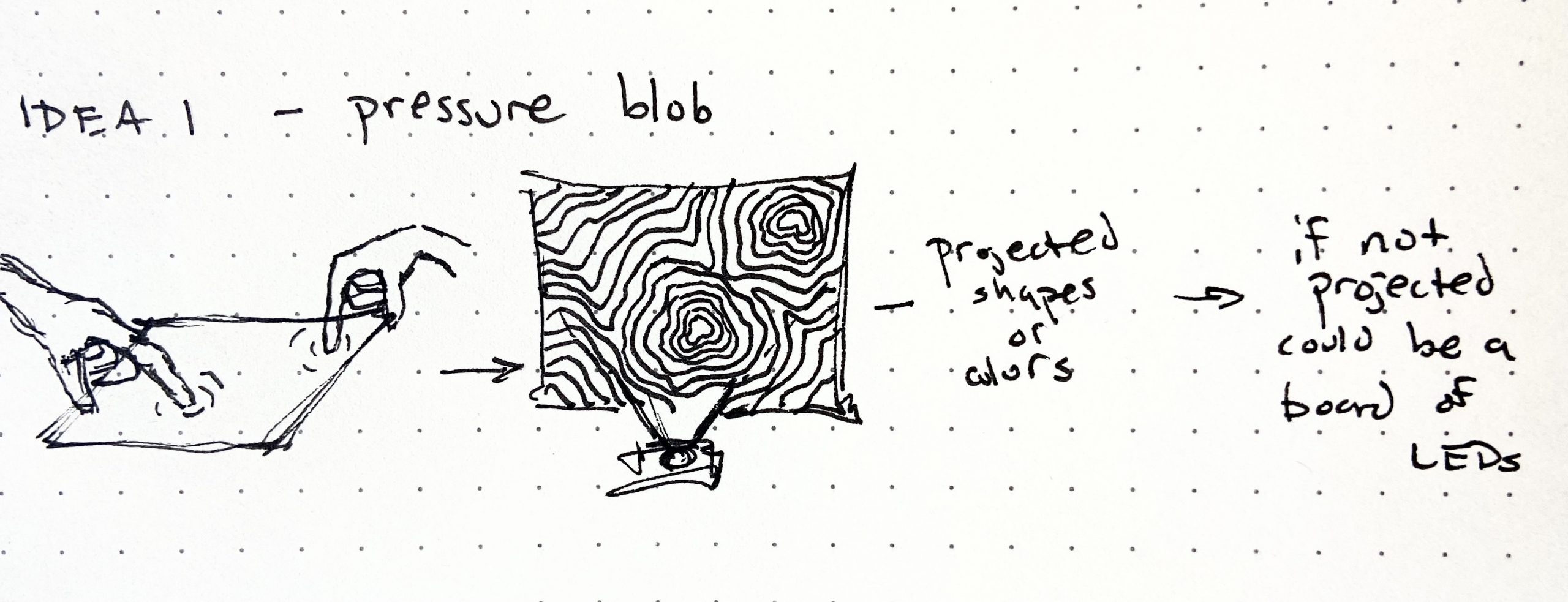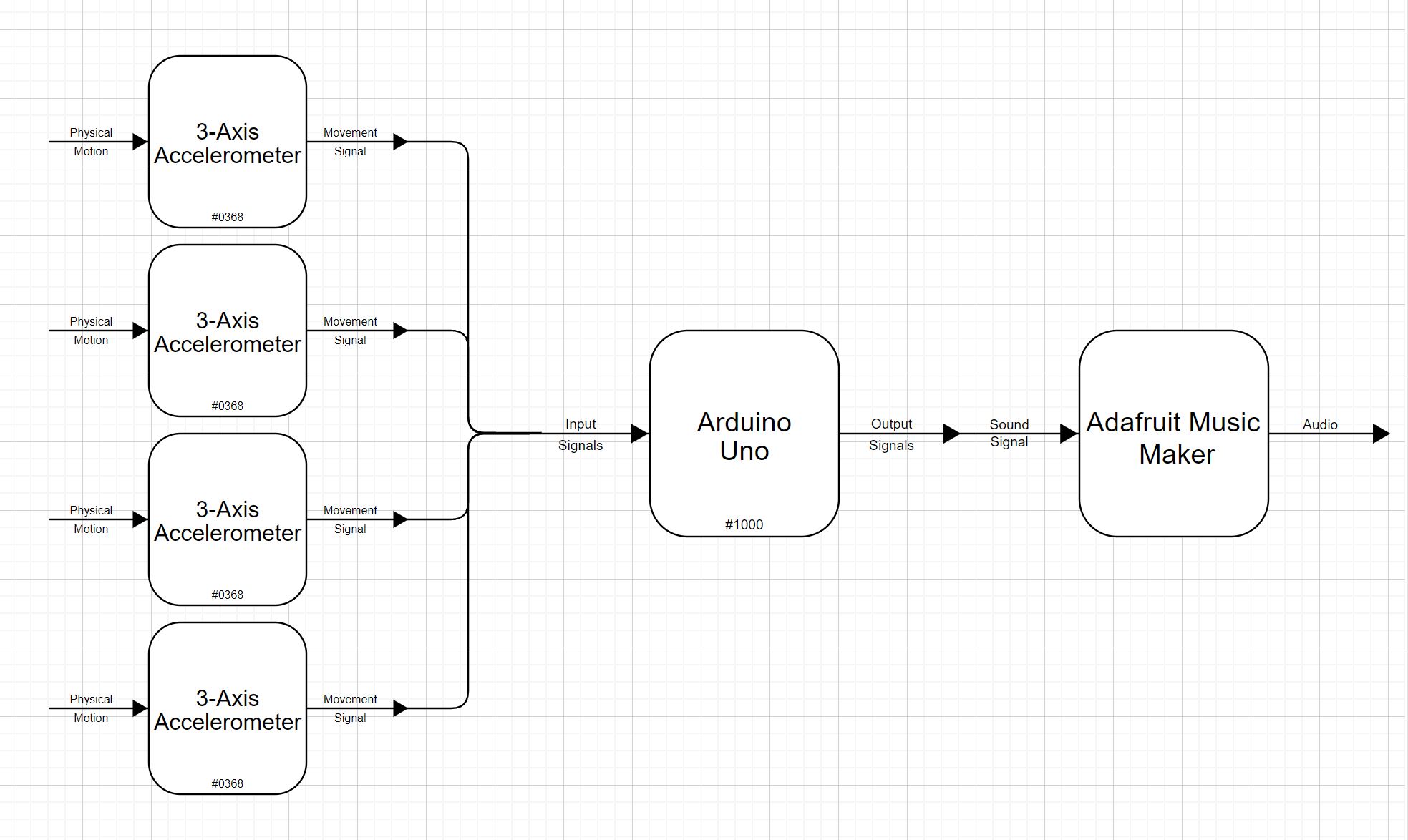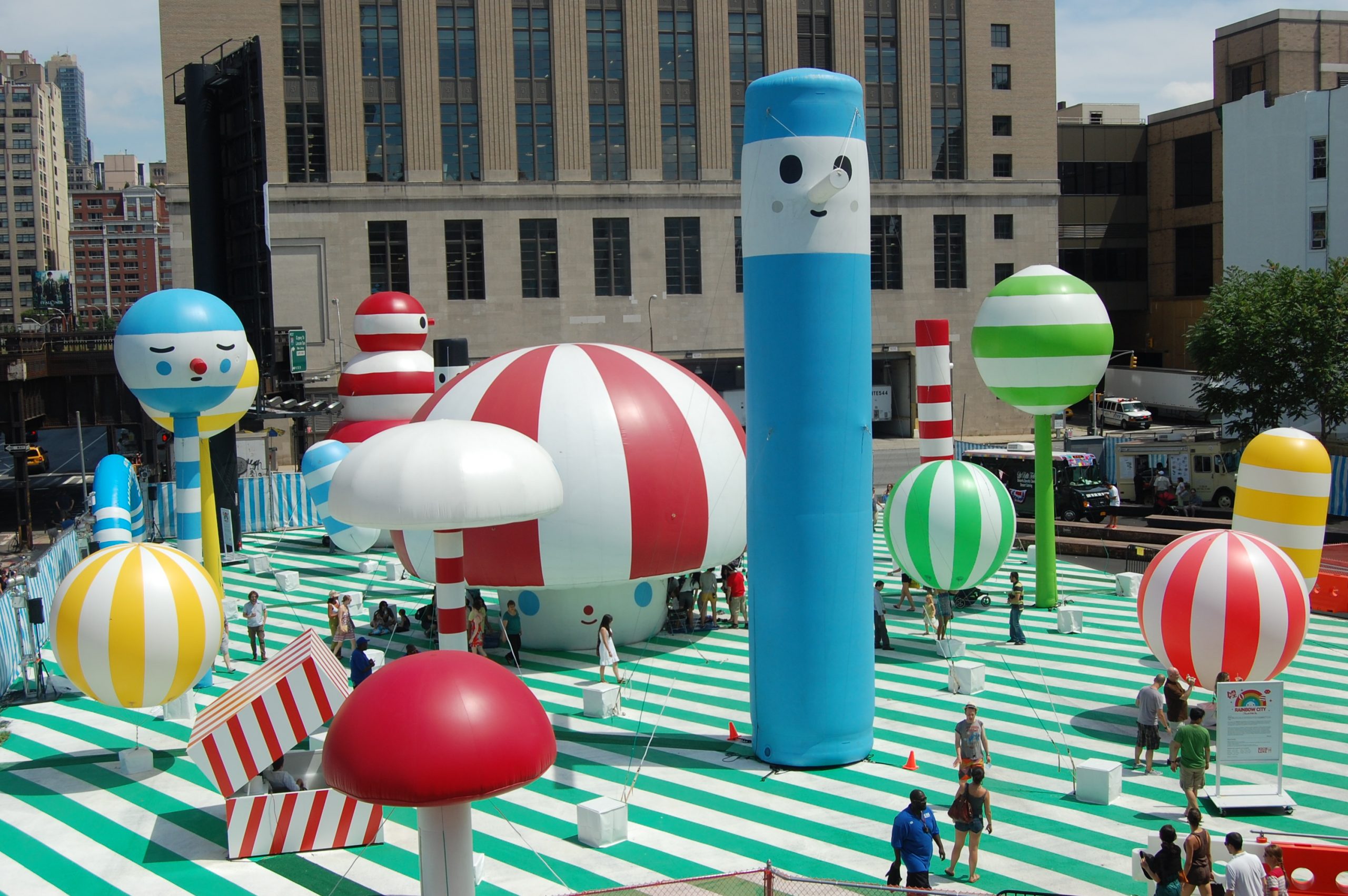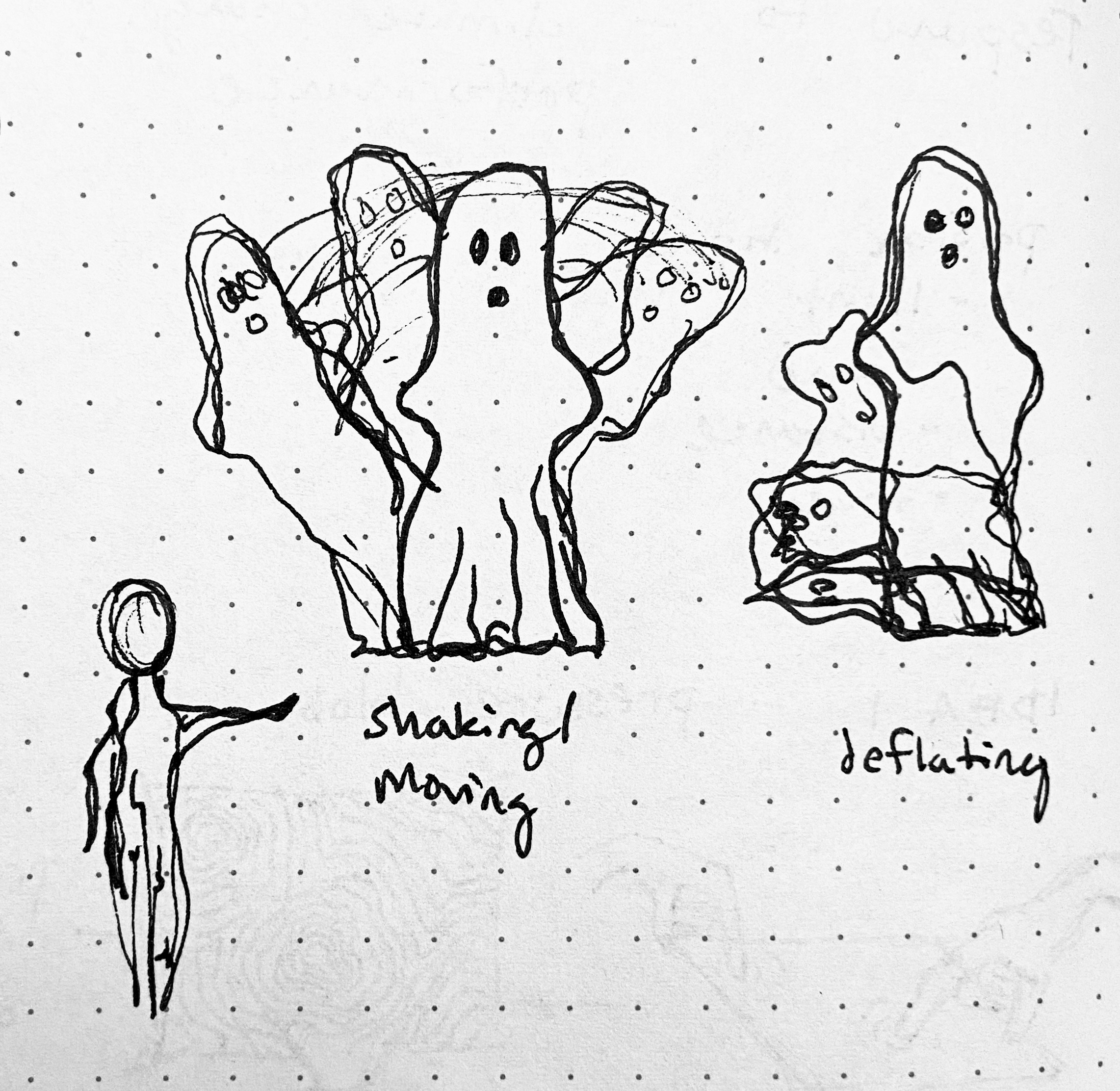Idea 1: Apply Pressure



Block Diagram:

I am excited about interactive artworks where the act of creating the art can become a kind of performance. For this project I was trying to think of creative inputs that can be translated to a range of outputs and I decided that working with force sensitive resistors could be fun. This project is designed to be an installation that produces a colored image gradient based off of the users interaction with a pressure mat. I imagine a grid of force sensitive resistors on a flat mat either placed on a table or mounted to the wall. Users will be encouraged to touch the mat and apply different levels of force around it to change the intensity of colors on a projected artwork. Each blob of color will correspond to one force sensitive resistor. The output making up the artwork can either be projected light (if I can figure out how to code that) or a grid of LEDs to communicate a similar effect. More pressure applied to a force sensitive resistor means there is less resistance therefore higher voltage being sent as an input to the arduino. I can program certain colors to display at different levels of brightness depending on what range of voltage is recorded.
If I use a grid of LEDs instead of a projection then the set up would have a greater range of possible sites. It could be left in my architecture studio for people to play with or set up in Hunt library. On the other hand, if I use a projector it would be sited in a dark room where the interaction is more of a planned event. I think this project would be a fun interactive experience that gets people excited about pressure mapping since they are able to generate their own unique artwork without ever picking up a tool. It would be designed for members of the public or friends of mine in the architecture studio to use.
This project is loosely inspired by the concept of an aura. An aura is thought to be the energy field that surrounds all living beings. Certain spiritual practices or special cameras can translate these energies into colors which then have various meanings. The images produced by this project are based on the users intuitive interaction with the pressure mat. No one would be telling the users how hard to press on certain parts of the pressure map so I feel like each artwork would be a unique representation of the person or people making it. While it is not exactly depicting their auras, the concept is derived from that idea.

Materials:
- arduino uno (ideate)
- wires (ideate)
- 9 force sensitive resistors (ideate? or order online from Mouser Electronics)
- fabric? for some kind of covering on the pressure map
- projector or grid of LEDS (ideate)
Idea 2: Musical Limbs
This project would use physical movement of the body as an input and the output would be sound.
Block Diagram:

I would attach four accelerometers to the user in total with one on each upper and lower arm. Each accelerometer would correlate to a different musical note and the volume of the note being played would increase with higher acceleration of movement. The four notes would be predetermined to make up a chord so that no matter the combination of movements, the output sounds nice.
This project would be interacted with one person at a time where people could volunteer to be the performer. It is sited on the body but the actual performance of the musical piece could be done anywhere. I am not sure yet how I would attach the accelerometers to the arms of the participants but ideally they would not hinder their arm movement. The experience is meant to be exciting and unexpected as the user discovers what types of movements produce which sounds. I would be interested to see if any of the participants start making calculated movements to try and control the chords being produced. I am also interested in what styles of movements the users might do and how many unique versions of the chords can be produced. For this idea I was inspired by my past experience in classical dance training. I wanted to translate physical movement into sound because I think it is an interesting subversion to the traditional way that dancers usually respond to sound with movement.

This sketch shows an example of how a participant might keep their body still if they know the accelerometers are only on their arms.
Materials:
- arduino uno (ideate)
- wires (ideate)
- 4 accelerometers (ideate)
- speakers (ideate)
Idea 3: Inflatable Sculpture
For this idea I wanted to use an inflatable sculpture. One option for the output could be voltage to an air pump that fills an inflatable sculpture I would design. For inputs I would use an ultrasonic ranger or another type of distance sensor. There would be an inverse relationship so that when a user gets closer to the sculpture the voltage to the air pump decreases and the sculpture begins to deflate. When a user gets further away from the sculpture the voltage to the air pump increases and the sculpture inflates quickly. One part of this idea that might be tricky is I would have to figure out a way for the air pump to know when the sculpture has reached max inflation so that it doesn’t pop. If this becomes too complicated maybe instead of the output being power to the air pump, I could have the sculpture already inflated and then make the ultrasonic ranger send signals to power a servo motor to shake the sculpture around like those inflatable mascots outside of car dealerships.


Block Diagram:

What inspired this idea are those inflatable Halloween decorations that people have on their front lawns. I think it would be fun to try and animate these sculptures based on your physical relationship to the object. Personally I think some of the Halloween inflatables are kind of creepy so I would like for them to deflate if I got too close to one (or if they got too close to me..) This project would be sited in a public space maybe with a sign that just says “do not touch.” There would be no other context so I could see how close people get to this thing and then watch them wonder if they accidentally caused it to deflate. Then once they back up it would be happy again. Or if I go the route of having the sculpture already inflated, maybe it starts moving really sporadic and rapidly when they get too close and slows down when they move away.

Materials:
- Plastic (ideate – Olivia Robinson?)
- Heat sealer (ideate)
- Air pump (ideate or order a smaller one online)
- Arduino uno (ideate)
- ultrasonic ranger (ideate)
- wires (ideate)